(See here for Part 1)
The vision of the blockchain summit was “We are gathering top thinkers in the world of blockchain, digital currency and bitcoin to help define the future”, and the organizers indeed put a very interesting group of people together. A combination of entrepreneurs, investors, journalists, regulation experts, scholars, laywers and academics. See here for a full list. The sessions were moderated by 3 people: First of all well-known economist, advisor to many heads of state, and author of The Mystery of Capital, Hernando de Soto. Next to that Michael Casey from the Wall Street Journal, and author of The Age of Cryptocurrency. And finally Matthew Bisshop, the US Business editor of The Economist magazine. Three very different persons, who did a great job moderating the event.
Preparing for a group picture
It was not a summit about bitcoin, but about the blockchain. That is the underlying ledger of bitcoin that is put together by the miners and that can be used for a lot more things than just keeping track of all transactions. This doesn’t have to be the bitcoin blockchain, it could be the blockchain of another cryptocurrency as well. For now that seems unlikely because of bitcoin’s network effect. But because of bitcoin’s bad name (mainly its association with Silk Road, Mt. Gox and the fact that people still seem to think it’s criminal money) another cryptocurrency could still appear and beat bitcoin. Or there could be different blockchains based on different cryptocurrencies. But in the end every blockchain is similar: it is a ledger and once you put something on it you can never take it off anymore. So to stay in Necker Island spirit: what happens on the blockchain stays on the block chain!
Most things that were discussed during the summit could be tweeted or put on social media. There were just a few topics that we agreed not to talk about (Chatham rules), so I won’t mention these here (mainly government related or related to specific confidential projects). Generally everybody was very open with sharing their information. All sessions were recorded, so you should be able to see most of the content online in the next couple of days.
Looking back, there were 4 main themes that came back regularly and that we discussed in detail. These are (in random order): identity, property rights, elections and the Internet of Things. A summary of the main ideas for each theme:
Identity: We discussed that the identity stack is a core application for the blockchain, it’s a critical piece for further development and needed for a trusted information economy system. This can be achieved by putting verified personal data on the blockchain. One project in this space is the Open Mustard Seed project, Patrick Deegan gave us a presentation about this. One of the other participants, Marshall Turber, is working on a similar idea. He is creating an integrity index using Ethereum, his project is called the Bucky Integrity Index.
Actress Lucy Liu joined via Skype
Property rights: Hernando de Soto wrote in his book The Mystery of Capital that many assets in developing countries can’t be capitalized because there are no titles for them. Having property deeds could make a lot of dead assets into assets that can be capitalized, meaning that they can more easily be sold to outsiders or that they can be used as collateral for a loan.
Having a system for property rights can make a poor country grow, and can help the lower classes to start businesses and grow more prosperous. So far that was quite hard to do, however, but the blockchain suddenly gives us a tool to easily put these rights in a database and to (for example) build smart contracts on top of them. The company Factom is doing this for Honduras already, where all property deeds will be put on the blockchain. The potential of this is huge!
Hernando shows us the documents needed to get property rights in Peru
Elections: The blockchain can be used for voting, making elections complete transparant. You could watch the voting in real time, but you would not know who voted for whom. Someone mentioned that it can bring democracy to the world (I’m not a fan of democracy in every situation, for the simple reason that it leads to slower decision making, so that argument is not very strong IMHO), but if it can replace existing voting systems I’m all in favour of it. I would not be surprised if a lot of democratic countries would strongly resist this, and if that’s the case it is clear there is a need for blockchain elections. On a smaller level it can get people to participate in decison making, even for example for a parent teacher association.
The Internet of Thing (IoT): IoT will connect all electronic devices, it will do with the physical world what the Internet did for the digital world. All devices could be put on the blockchain and they could communicate with each other and even pay each other with smart contracts. The killer app for this will be the Economy of Things, meaning that exisiting ‘things’ can be used more efficiently. For example, at the moment cars are only in use about 4% of the time. If they can communicate with each other people can car share more easily, especially when autonomous vehicles will hit the market over the next years. Another example is that currently 20% of all trucks on the roads are empty, the IoT could reduce that number.
A list of some other things that we discussed during the past 3 days and things that stood out for me:
– It turns out that wallets may be one of the main hurdles for bitcoin adoption. Last year MIT gave all of its new students $100 in bitcoin and we talked a bit about what the effects of that. Soon a report about this will come out, but one of the important findings is that even MIT students (who are young and smart) struggled with wallets. Students that have easier-to-use wallets adopted bitcoin more than people who used ‘difficult’ wallets. Good news for Circle.com investors but not so much for Blockchain.info.
– Corporates worry that competitors can hack their blockchain and that’s holding them back from looking at blockchain solutions. Education will be needed.
– Although it should be well known for most people in the bitcoin community, we should keep on spreading the word about the fact that bitcoin is not an anonymous currency. One of the speakers remarked: despite media saying the contrary, any criminal that uses the Blockchain is a moron.
– Organizations like Western Union and payday loan companies are almost criminal. What they charge is ridiculous and we should find a solution for the poor people that now rely on their services. Oliver Luckett of theAudience made a documentary for American Express last year and learned that the average payback of a $400 payday loan in Mississippi is $1400, after on average 2 years! These people just don’t have access to other sources of capital. They often can’t get a bank account and therefore need to use check cashing services ($7 per check) and to pay bills ($7 per bill). That adds up after a while. These are the people that should be interested in bitcoin accounts, because it can solve some big problems for them and will save them a lot of money.
– Although most people at the summit talk online about bitcoin on a daily basis only 300,000-400,000 people engaged in online conversations about BTC so far (since BTC was introduced to the world in 2009). We tend to think that it’s much bigger because we live in an echo chamber, but it also means that there is a huge opportunity out there that we need to grab.
– A blockchain idea that came out of smaller group discussions is something that we called the sensor chain. This is a low cost sensor to measure weather data all over the world (e.g. temperature, air pollution, water quality) and which data is automatically stored on the blockchain as part of the Internet of Things. In this way we can help to save the planet and get independent data on what is really happening in the world. The data can’t be hacked or manipulated (once it’s in the blockchain it stays in the blockchain). A very interesting idea that hopefully can become reality.
– Related to this are personal carbon credits on the blockchain, e.g. you get these credits if you have solar panels on your roof. There is enough solar power to deliver energy to the whole world, but there is no decentralized grid yet.
– A fun part of the summit was when Bitfury introduced a mining lightbulb with an iPhone app. The idea was born last year (coincidentally on Necker island as well) when a few people were trying to get a Raspberry Pi to mine bitcoins. It was so hard to set it up (it took them 4 hours) that Bill Tai made the remark that mining should be as easy as screwing in a lightbulb. Well, one year later the lightbulb is there. The Bitfury guys hooked it up to a wind power generator that they rigged on the rooftop of the Great House and managed to mine some bits using just windpower.
It was a fun side project for them, not something that is core to the business. When I posted it on Twitter it got retweeted hundreds of times and I got tons of questions about it, it seems people did not realize it’s not a serious product. The chip is super efficient, but given today’s hashrate and the low bitcoin price you should not expect to make more than your electricity cost. However, it’s a good way to start mining and it may inspire others to build other easy-to-use miners. The gadget (because that’s basically what it is) also has an interesting feature: there is some kind of random lucky draw for users, meaning that if you mine you may suddenly get the ‘petasplash’: suddenly all the hashing power of Bitfury’s network is redirected to your lighbulb, meaning that you can suddenly earn a good number of bits. A cool project, especially when you should hook it up to solar power or to a Tesla battery, so that you don’t pay cash for the electricity.
Hernando de Soto and Richard Branson
What’s next?
If you made it until here you will realize that we discussed a lot of things and that we have a lot of ideas. However, what really counts is the follow-up. What might happen over the next weeks and months? We talked about writing a white paper for congress, because it’s important that the politicians have a better understanding of the blockchain and what can be done with it. Spreading the word on social media is also important, I guess this blog post is part of that strategy. We also discussed that academia should be more involved, as the link between entrepreneurs and the government (MIT now already pays some of the core developers, they took over this role from the Bitcoin Foundation). For that reason a textbook for students (Michael Casey joked that his book might be a good fit) and a PhD course are needed. The group will stay in touch through email (this morning we already received all email addresses) and through Facebook group to try to achieve these objectives.
The blockchain summit is now over and looking back I think it was totally worth my time. It was not cheap to attend and it took me almost 2 full days of traveling, but the value I got out of it was much higher than the real monetary cost and the opportunity cost of the event. First of all I learned a lot and we came up with many new ideas. Next to that I met tons of interesting people whom I often only knew from the Internet. As an added extra I even found 2 interesting companies that I may invest in. I am glad I took the time out of my schedule to attend.
Valery, George, Bill and Richard, thanks for hosting this fantastic event!
All pictures of the Blockchain summit are here in a set on Flickr.

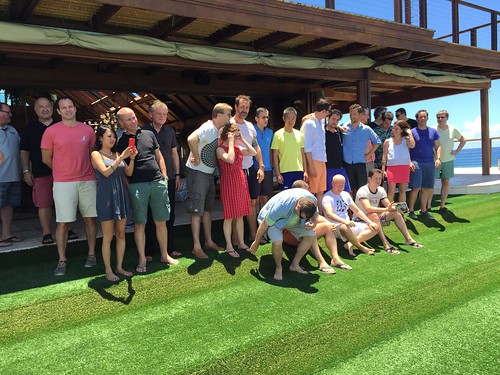
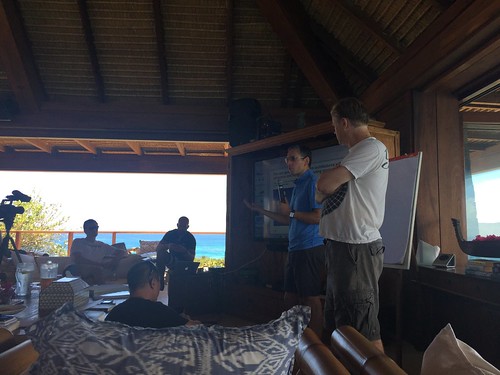
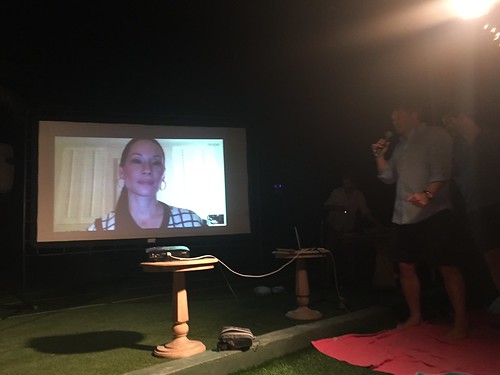

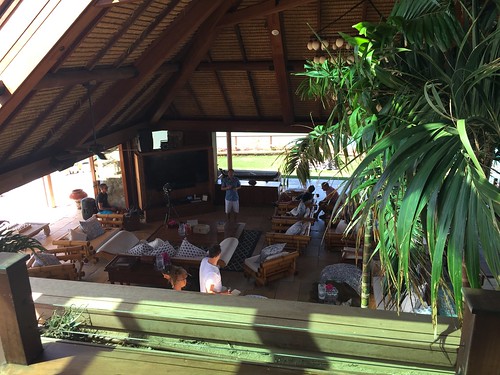
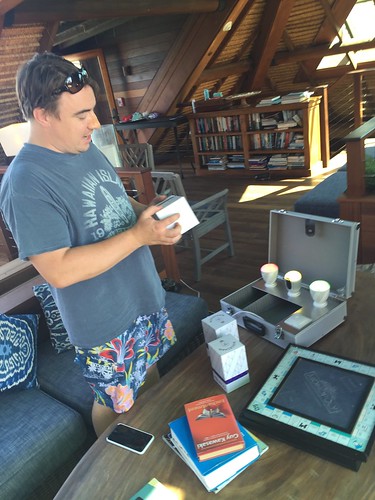


Thanks for your work writing these blogs and thanks for the pictures. Having some idea of the attendees and then the topics of conversation they concentrated on exploring is very helpful, thanks.
http://www.hln.be/hln/nl/942/Economie/article/detail/2410024/2015/08/01/Japanse-politie-arresteert-topman-bitcoinbeurs.dhtml
Toch best interessant, niet?